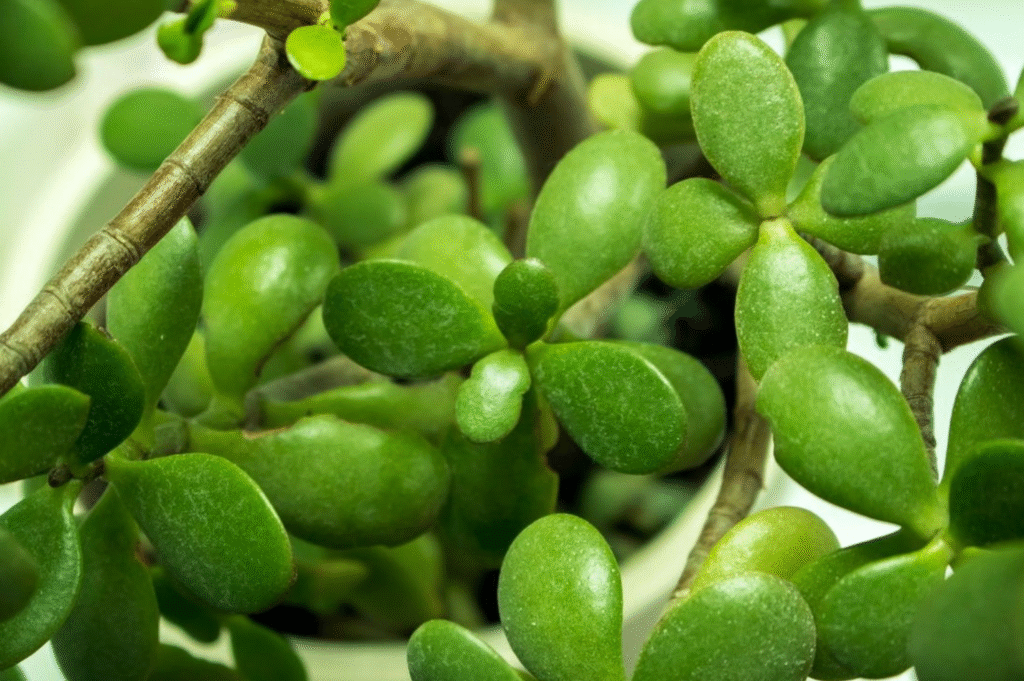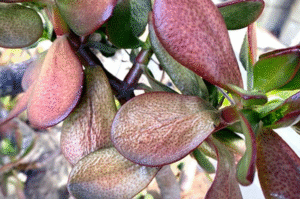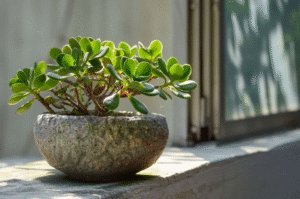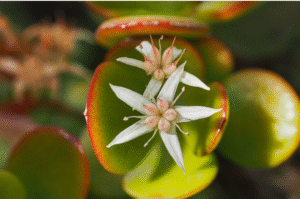Jade plants (Crassula ovata) are one of the most popular indoor succulents thanks to their low maintenance, glossy green leaves, and money-attracting reputation. But despite their tough appearance, these plants are not immune to pests (especially mealybugs).
If you’ve spotted cotton-like fluff on your jade plant, chances are you’re dealing with mealybugs. Don’t worry, you’re not alone. Many houseplant lovers face this pest problem. The good news is, with the right methods, you can get rid of mealybugs and protect your jade plant from further damage.
In this guide, we’ll explain how to identify mealybugs, their effects on your jade plant, and step-by-step methods to eliminate them naturally and chemically.
What Are Mealybugs?
Mealybugs are small, soft-bodied insects that often appear as white, cottony masses on the leaves, stems, and leaf joints of plants. They feed on plant sap by piercing the tissue, which weakens the plant and makes it more prone to disease.
Mealybugs also excrete a sticky substance called honeydew, which attracts ants and leads to sooty mold. A black fungus that can cover your plant’s surface.
Signs of Mealybug Infestation
If your jade plant is under attack, here are the signs to look out for:
- White, fluffy, or cotton-like clusters on leaves and stems
- Sticky residue on the leaves or the surface around the plant
- Yellowing or curling leaves
- Stunted growth or dropping leaves
- Black, sooty mold on leaves
Catching mealybugs early makes treatment much easier—so inspect your plant often.
Why Jade Plants Attract Mealybugs
Jade plants store water in their thick leaves, making them juicy targets for pests like mealybugs. Overwatering, poor air circulation, and lack of natural predators indoors can all contribute to an infestation.
How to Get Rid of Mealybugs on Jade Plant (Step-by-Step)
Let’s break down the most effective ways to eliminate mealybugs from your jade plant. We’ve tested each method, and these are the ones that work best.
1. Manual Removal
Best for: Light infestations
Tools Needed:
- Cotton swabs
- Rubbing alcohol (70% isopropyl alcohol)
How to Apply:
Dip a cotton swab in rubbing alcohol and dab it directly onto the mealybugs. Alcohol dissolves their protective wax coating, killing them instantly.
Pro Tip: Wipe off all visible bugs and repeat every few days to catch new hatchlings.
2. Spray with Neem Oil
Best for: Mild to moderate infestations
Tools Needed:
- Neem oil
- Spray bottle
- Water and mild liquid soap (optional)
Instructions:
- Mix 1 tsp of neem oil with 1 quart (1 liter) of water.
- Add a few drops of liquid soap to help the oil stick.
- Shake well and spray directly onto the infested areas.
Neem oil is a natural insecticide and also works as a repellent, preventing future infestations.
Frequency: Spray once every 5–7 days until the mealybugs are gone.
3. Insecticidal Soap
Best for: Medium infestations
Insecticidal soaps are specially designed to kill soft-bodied insects like mealybugs without harming your plant. Choose a product labeled safe for succulents.
How to Use:
Spray the solution generously on all plant surfaces, especially under the leaves and in leaf joints.
Note: Test on one leaf first to ensure it doesn’t burn the plant.
4. Prune Affected Areas
Best for: Severe infestations or isolated clusters
If the infestation is localized, remove the worst-hit parts of the plant using sterile scissors or pruning shears.
Don’t forget:
- Dispose of the pruned parts in a sealed bag.
- Clean your tools with alcohol after pruning.
This method helps prevent the pests from spreading to healthy areas.
5. Use Systemic Insecticides (as a Last Resort)
Best for: Large, persistent infestations
Systemic insecticides are absorbed by the plant and kill pests that feed on it. Look for a product safe for indoor succulents and follow the instructions carefully.
Warning: Use only in well-ventilated areas and keep away from pets and children.
Aftercare and Prevention Tips
Getting rid of mealybugs is only half the battle. The key is preventing them from returning.
Here’s how you can keep your jade plant pest-free:
- Inspect new plants: Always check for pests before bringing a new plant home.
- Isolate infected plants: Keep infested plants away from others for at least 2–3 weeks.
- Avoid overwatering: Mealybugs love moisture. Let the soil dry out between watering.
- Improve air circulation: Use fans or open windows to keep air moving indoors.
- Wipe leaves regularly: Clean your jade plant’s leaves every few weeks with a damp cloth or alcohol wipe.
Are Mealybugs Harmful to Humans?
Mealybugs do not bite humans or pets, but their presence can be frustrating and unhygienic, especially when they attract ants or spread mold.
While they’re not dangerous, they are harmful to your jade plant and should be addressed quickly.
Final Verdict
Mealybugs are a common but treatable issue for jade plant owners. From simple alcohol wipes to neem oil sprays and systemic treatments, you have multiple options to get rid of them based on how severe the infestation is.
The most important thing is to act quickly, stay consistent with your treatment, and build a pest-prevention routine.
By following the steps above, you can bring your jade plant back to life and keep it looking vibrant, green, and healthy.






